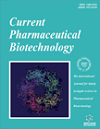
Full text loading...
Mycobacterium tuberculosis, Mycobacterium leprae, and non-tuberculous mycobacteria (NTM) are among the most significant human pathogens within the Mycobacterium genus. These pathogens can infect people who come into contact with biomaterials or have chronic illnesses. A characteristic pathogenic trait of mycobacteria is the development of biofilms, which involves several molecules, such as the GroEL1 chaperone, glycopeptidolipids, and shorter-chain mycolic acids. Bacterial behavior is influenced by nutrients, ions, and carbon sources, which also play a regulatory role in biofilm development. Compared to their planktonic phase, mycobacterial biofilms are more resilient to environmental stresses and disinfectants. Mycobacteria that produce biofilms have been found in several environmental studies, particularly in water systems. NTM can cause respiratory problems in individuals with underlying illnesses such as cystic fibrosis, bronchiectasis, and old tuberculosis scars. Mycobacteria that grow slowly, like those in the Mycobacterium avium complex (MAC), or rapidly, like Mycobacterium abscessus, can be pathogens. Infections related to biomaterials represent a significant category of biofilm-associated infections, with rapidly growing mycobacteria being the most frequently identified organisms. A biofilm produced by M. tuberculosis can contribute to caseous necrosis and cavity formation in lung tissue. Additionally, M. tuberculosis forms biofilms on clinical biomaterials. Biofilm formation is a major contributor to antimicrobial resistance, providing defense against drugs that would typically be effective against these bacteria in their planktonic state. The antibiotic resistance of biofilm-forming microbes may render therapy ineffective, necessitating the physical removal of biofilms to cure the infection. Recently, new approaches have been developed with potential anti-biofilm compounds to increase treatment effectiveness. Understanding biofilms is crucial for the appropriate treatment of various NTM diseases, and the recent discovery of M. tuberculosis biofilms has opened up a new field of study. This review focuses on the biofilm formation of the Mycobacterial genus, the mechanisms of biofilm formation, and anti-mycobacterial biofilm agents.

Article metrics loading...

Full text loading...
References


Data & Media loading...

